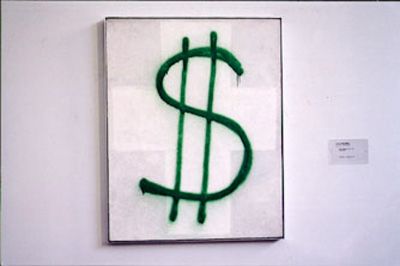 Uses and Abuses of Art History
Uses and Abuses of Art History
Methods and modes of working, games played in an era where everybody forgets everything, historicity is considered a faux pas. ‘In an age that has forgotten how to think, first of all, historically,’ (Jameson) it is refreshing to discuss the application of history, or in this case art history within the field of play- contemporary art. My point of view is a personal one, built upon years of working that involves aspects of decolonization, displacement mappings, ersatz notions organized within a semi ‘pataphysical nomenclature in a process, a labour of love.
Suprematism (White Cross) Alexander Brener’s dialogue with Kazimir Malevich
In a quasi-archival logic, I rework history and art history in contemporary practice and part of this process is the outcome of a new ‘archive’, or rather platform or podium, installation or staging, which all seem to contain those things that are ‘found yet constructed, factual, yet fictive, public yet private.’ (Foster)
By re-appropriating the past into the present, art history is still alive; reworked, reorganized, recycled and its dilemma of being forgotten as quickly as it is made, is all part of the process.
editor’s note: I have seen the Malevich in the Stedelijk before and after Brener’s intervention. I could swear that I saw a dollar sign (or is it the aura?) appear after the restoration.
Panel: Writing Histories of Contemporary Art, AAH conference
April 8, 2006
University of Leeds
Leeds, U.K.